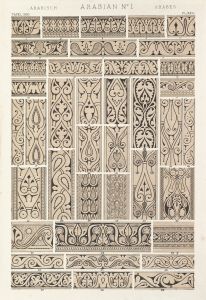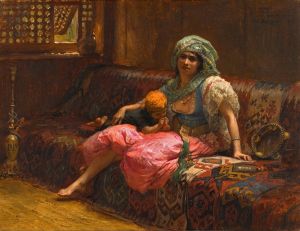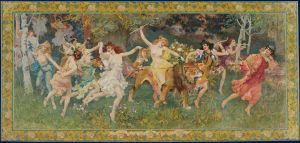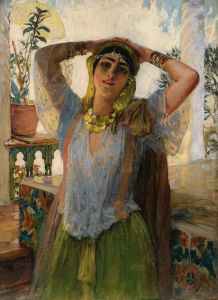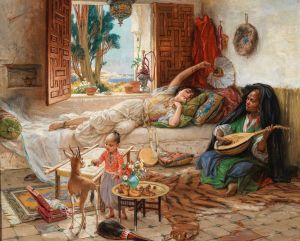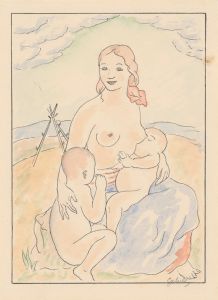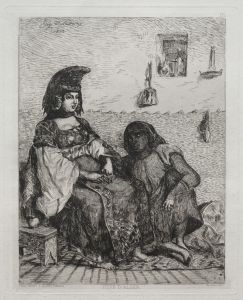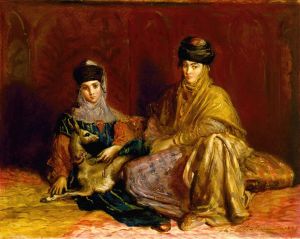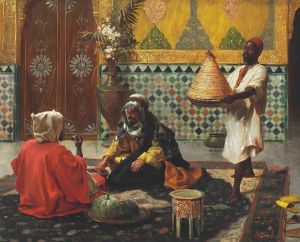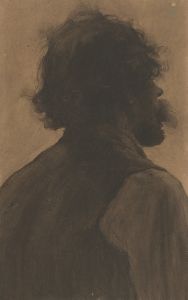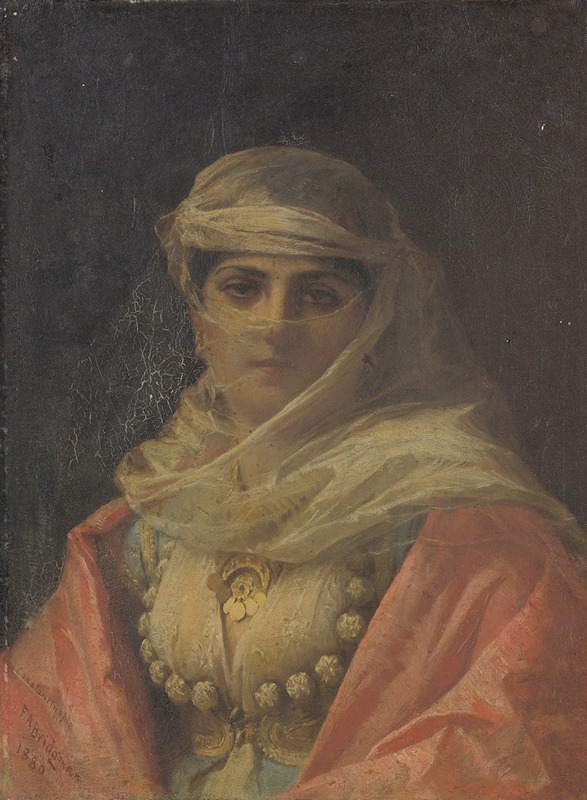
A Turkish Beauty
A hand-painted replica of Frederick Arthur Bridgman’s masterpiece A Turkish Beauty, meticulously crafted by professional artists to capture the true essence of the original. Each piece is created with museum-quality canvas and rare mineral pigments, carefully painted by experienced artists with delicate brushstrokes and rich, layered colors to perfectly recreate the texture of the original artwork. Unlike machine-printed reproductions, this hand-painted version brings the painting to life, infused with the artist’s emotions and skill in every stroke. Whether for personal collection or home decoration, it instantly elevates the artistic atmosphere of any space.
Frederick Arthur Bridgman was an American artist known for his Orientalist paintings, which often depicted scenes from North Africa and the Middle East. One of his notable works is "A Turkish Beauty," a painting that exemplifies his fascination with the exotic and the romanticized vision of the East that was prevalent in Western art during the 19th century.
Bridgman was born in Tuskegee, Alabama, in 1847 and later moved to New York City, where he began his artistic training. He furthered his studies in Paris under the tutelage of the renowned academic painter Jean-Léon Gérôme, who was a significant influence on his style and subject matter. Bridgman's exposure to Gérôme's work and his own travels to Egypt and Algeria in the 1870s deeply informed his artistic direction, leading him to focus on Orientalist themes.
"A Turkish Beauty" is a fine example of Bridgman's skill in capturing the allure and mystique of the East. The painting portrays a young Turkish woman, characterized by her traditional attire and serene expression. Bridgman's attention to detail is evident in the intricate patterns of the fabric and the delicate rendering of the woman's features. The use of light and shadow in the painting highlights the textures and colors, adding depth and realism to the composition.
The Orientalist movement, of which Bridgman was a part, was marked by Western artists' fascination with the cultures, landscapes, and peoples of the Middle East and North Africa. This movement often romanticized and idealized these regions, sometimes at the expense of accuracy and cultural sensitivity. Bridgman's works, including "A Turkish Beauty," reflect this trend, offering a glimpse into how the East was perceived by Western audiences during the 19th century.
Bridgman's paintings were well-received in his time, and he exhibited regularly at the Paris Salon and other prestigious venues. His works were praised for their technical proficiency and the exotic appeal of their subject matter. "A Turkish Beauty," like many of his paintings, would have appealed to the tastes of art collectors and the general public who were captivated by the allure of the Orient.
Today, Bridgman's work is appreciated for its artistic merit and as a historical artifact that provides insight into the cultural attitudes of his era. "A Turkish Beauty" remains a testament to Bridgman's ability to blend academic painting techniques with the exotic themes that fascinated him and his contemporaries. While the Orientalist perspective has been critiqued for its often stereotypical and romanticized portrayals, Bridgman's paintings continue to be studied and admired for their craftsmanship and their role in the broader context of 19th-century art.
In summary, "A Turkish Beauty" by Frederick Arthur Bridgman is a quintessential example of Orientalist art, showcasing the artist's technical skill and his engagement with the themes of exoticism and cultural fascination that characterized much of his work.





